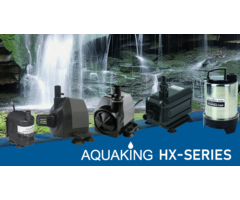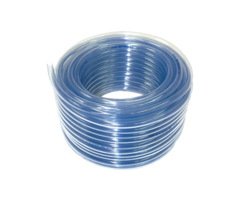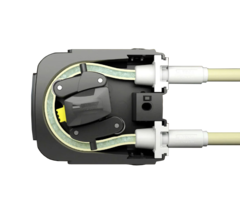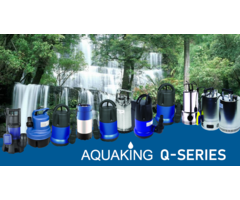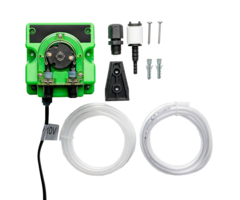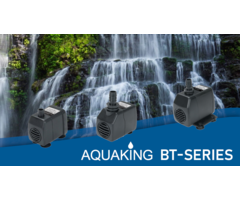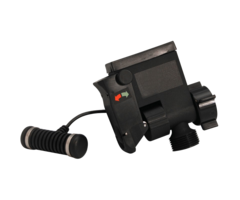Water pumps ~ Submersible pump - Circulation pump - Dosing pump
What is a submersible pump?
A submersible pump is a type of water pump that is submerged in water and is used to pump water from reservoirs, basements, ponds and other water sources. The main advantage of a submersible pump is that it can effectively move water without any help from gravity. This makes it a very useful tool when emptying basements or watering a garden or lawn.
There are different types when it comes to a submersible pump, including dirty water pumps and clean water pumps. A dirty water pump is designed to move water with small dirt particles, while a clean water pump is suitable for moving clean water. When buying a submersible pump, it is important to consider the required capacity, the height at which the water needs to be pumped and the size of the particles to be pumped.
What is a Circulation pump?
In addition to a submersible pump, circulation pumps are also available; these are used to circulate water in a closed system, such as in a central heating system, food tank or an aquarium. A circulation pump ensures that water is pumped evenly through the system and prevents it from becoming stagnant.
There are several brands and models when it comes to a circulation pump or a submersible pump. When choosing a pump, it is important to pay attention to the pump's capacity, drive type and connection options.
What is a Dosing pump?
Another important category of pumps is a dosing pump. A dosing pump is used to accurately dose liquids, for example, in industrial processes, swimming pools and water treatment plants. These pumps are capable of dosing liquids in a constant and precise manner, which is essential for the quality and safety of the production process.
Dosing pumps come in different types and sizes. The most common types are diaphragm pumps and peristaltic pumps. A diaphragm pump has a flexible diaphragm that moves back and forth to move the liquid. In a peristaltic pump, the liquid is pushed through a tube that is compressed by a rotating element.
Proper maintenance
Maintaining a submersible pump, metering pump or circulation pump is important to extend its life. Regular maintenance can also prevent the pump from clogging or malfunctioning. For example, it is important to clean dirty water pumps regularly to prevent dirt particles from blocking the pump.
In short, submersible pumps, dosing pumps and circulation pumps are important tools for moving water in various environments. Whether emptying a basement or distributing heat evenly in a central heating system, these pumps offer an efficient and reliable solution.

What is a submersible pump?
A submersible pump is a type of water pump that is submerged in water and is used to pump water from reservoirs, basements, ponds and other water sources. The main advantage of a submersible pump is that it can effectively move water without any help from gravity. This makes it a very useful tool when emptying basements or watering a garden or lawn.
There are different types when it comes to a submersible pump, including dirty water pumps and clean water pumps. A dirty water pump is designed to move water with small dirt particles, while a clean water pump is suitable for moving clean water. When buying a submersible pump, it is important to consider the required capacity, the height at which the water needs to be pumped and the size of the particles to be pumped.
What is a Circulation pump?
In addition to a submersible pump, circulation pumps are also available; these are used to circulate water in a closed system, such as in a central heating system, food tank or an aquarium. A circulation pump ensures that water is pumped evenly through the system and prevents it from becoming stagnant.
There are several brands and models when it comes to a circulation pump or a submersible pump. When choosing a pump, it is important to pay attention to the pump's capacity, drive type and connection options.
What is a Dosing pump?
Another important category of pumps is a dosing pump. A dosing pump is used to accurately dose liquids, for example, in industrial processes, swimming pools and water treatment plants. These pumps are capable of dosing liquids in a constant and precise manner, which is essential for the quality and safety of the production process.
Dosing pumps come in different types and sizes. The most common types are diaphragm pumps and peristaltic pumps. A diaphragm pump has a flexible diaphragm that moves back and forth to move the liquid. In a peristaltic pump, the liquid is pushed through a tube that is compressed by a rotating element.
Proper maintenance
Maintaining a submersible pump, metering pump or circulation pump is important to extend its life. Regular maintenance can also prevent the pump from clogging or malfunctioning. For example, it is important to clean dirty water pumps regularly to prevent dirt particles from blocking the pump.
In short, submersible pumps, dosing pumps and circulation pumps are important tools for moving water in various environments. Whether emptying a basement or distributing heat evenly in a central heating system, these pumps offer an efficient and reliable solution.

Available:
- HX-1500(300ltr)
- HX-2500(1000ltr)
- HX-450...
Available:
- NKP (10~60ml/min)
- KFS (1~85m...
Q1000V2 (2000ltr)
Q2001 (2800ltr)
Q2007 (3600ltr)
Q2503 (5000ltr)
Q800103 (5500ltr)
Q4003 (7000ltr)
Q55051 (8500ltr)
Q50011 + in...
Available:
-BT-200B(200ltr)
-BT-400B(380ltr)
-BT-700B(69...
What is a submersible pump?
A submersible pump is a type of water pump that is submerged in water and is used to pump water from reservoirs, basements, ponds and other water sources. The main advantage of a submersible pump is that it can effectively move water without any help from gravity. This makes it a very useful tool when emptying basements or watering a garden or lawn.
There are different types when it comes to a submersible pump, including dirty water pumps and clean water pumps. A dirty water pump is designed to move water with small dirt particles, while a clean water pump is suitable for moving clean water. When buying a submersible pump, it is important to consider the required capacity, the height at which the water needs to be pumped and the size of the particles to be pumped.
What is a Circulation pump?
In addition to a submersible pump, circulation pumps are also available; these are used to circulate water in a closed system, such as in a central heating system, food tank or an aquarium. A circulation pump ensures that water is pumped evenly through the system and prevents it from becoming stagnant.
There are several brands and models when it comes to a circulation pump or a submersible pump. When choosing a pump, it is important to pay attention to the pump's capacity, drive type and connection options.
What is a Dosing pump?
Another important category of pumps is a dosing pump. A dosing pump is used to accurately dose liquids, for example, in industrial processes, swimming pools and water treatment plants. These pumps are capable of dosing liquids in a constant and precise manner, which is essential for the quality and safety of the production process.
Dosing pumps come in different types and sizes. The most common types are diaphragm pumps and peristaltic pumps. A diaphragm pump has a flexible diaphragm that moves back and forth to move the liquid. In a peristaltic pump, the liquid is pushed through a tube that is compressed by a rotating element.
Proper maintenance
Maintaining a submersible pump, metering pump or circulation pump is important to extend its life. Regular maintenance can also prevent the pump from clogging or malfunctioning. For example, it is important to clean dirty water pumps regularly to prevent dirt particles from blocking the pump.
In short, submersible pumps, dosing pumps and circulation pumps are important tools for moving water in various environments. Whether emptying a basement or distributing heat evenly in a central heating system, these pumps offer an efficient and reliable solution.


